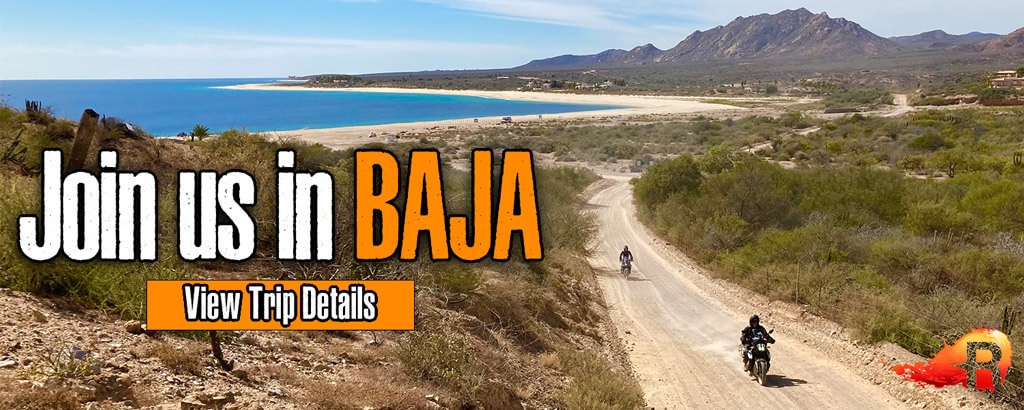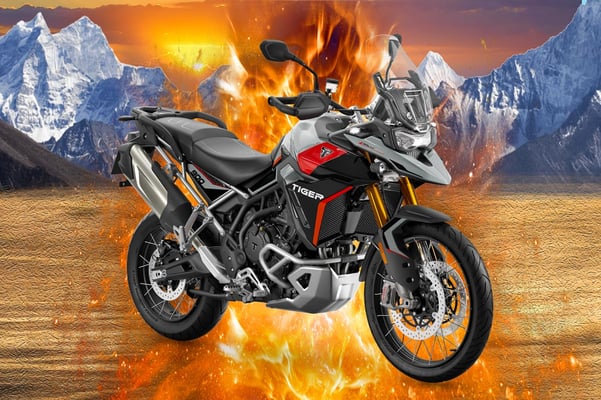 Triumph made some big updates for the 2024 Tiger 900 range. Let's break down the different models to see what they got right and what still needs work.
Triumph made some big updates for the 2024 Tiger 900 range. Let's break down the different models to see what they got right and what still needs work.
The middleweight ADV arms race rages on, and by and large parallel twin engines continue to dominate the landscape. Triumph's Tiger 900 enters 2024 as one of the few alternatives to the rank-and-file inline-twin, and if you've ever twisted the wick on a British triple, you'll know these engines are a treat to experience.
So what's new for 2024? In short the Triumph Tiger 900 gets more power, more standard features, and cuts the total number of available models down from a whopping 7 variants to just three options: The GT, GT Pro, and Rally Pro. Below we'll review what's changed, what hasn't, and what you need to know about the new and improved Tiger 900.
The Lineup: Model Differences for 2024
Triumph has simplified the middleweight Tiger lineup this year to just three different versions. Here are the major updates and distinctions to know for all three.
Triumph Tiger 900 GT
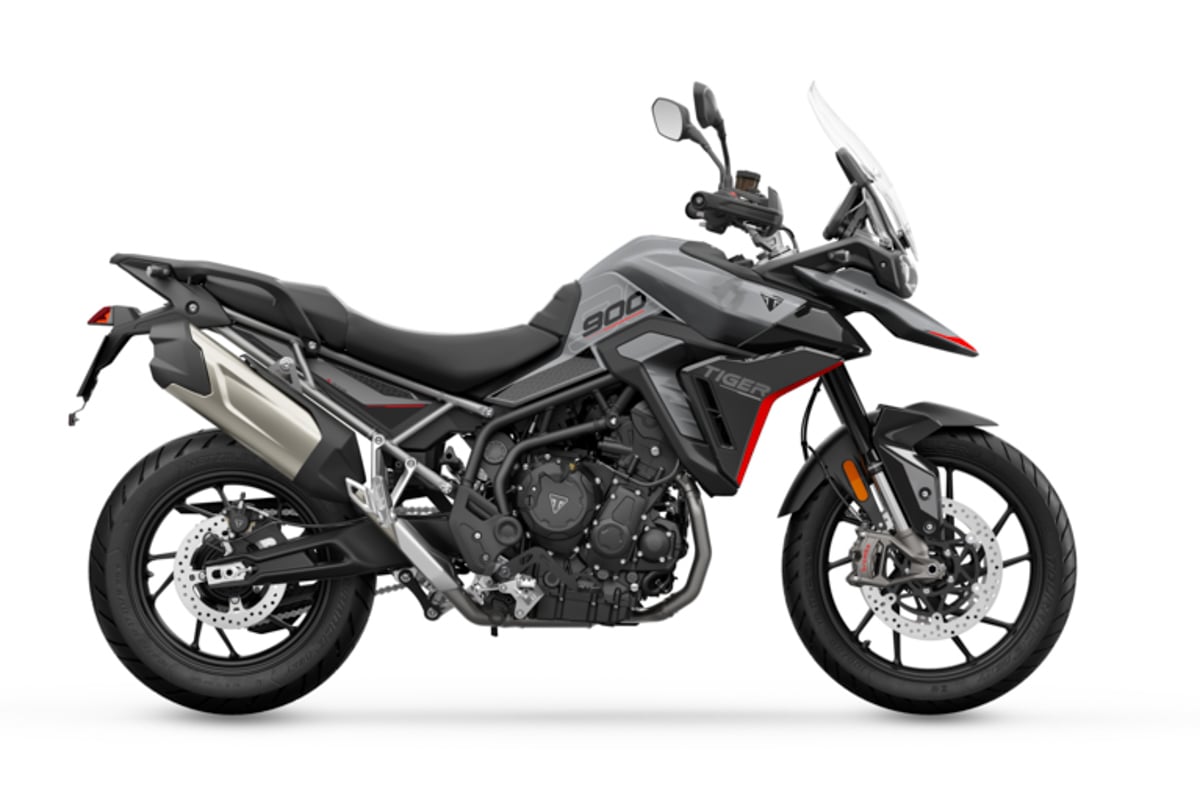
MSRP: $14,995
The 900 GT returns as the base model for Triumph's 2024 lineup, and brings all the major updates and upgrades in at the lowest price point of just under $15K. That means you're getting the latest rendition of Triumph's new 888cc triple, which now packs a 100+ horsepower punch, slating in nicely between its main competitors the KTM 890 and Ducati Desert X in terms of outright muscle.
As the GT name suggests, the base model is a road-focused ADV built more for carving canyons and eating up long stretches of freeway than exploring gravel roads or trails.
This street-biased setup includes a set of 19/17" wheels shod in Metzeler Tourance TM Next tires, as well as more road-oriented suspension, in this case a pair of Marzocchi 45mm forks (180mm of travel) paired with a 170mm Marzocchi shock.
Triumph Tiger 900 GT Pro
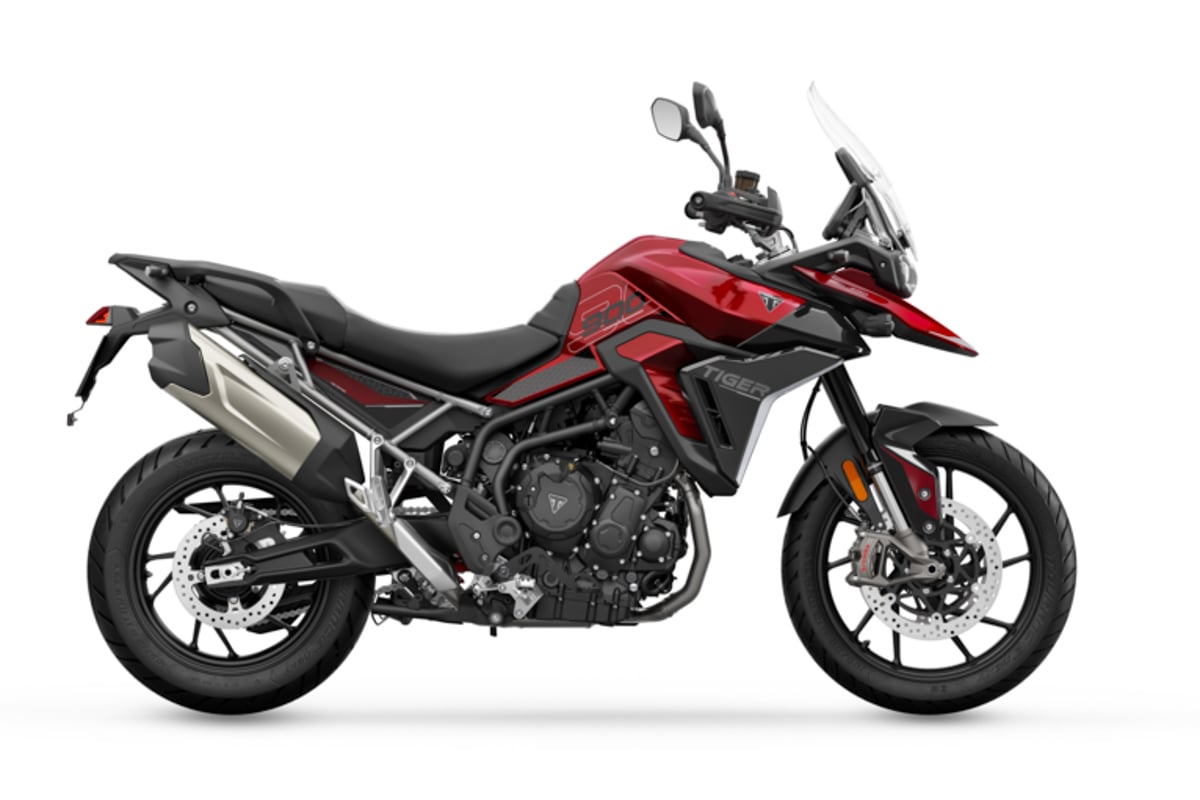
MSRP: $16,895
The GT Pro is Triumph's top-shelf offering for road-going adventures in 2024, combining all the new refinements to the engine and tech package with a handful of touring comforts for a few ($2000) dollars more. Chief among those upgrades is the addition of an up-and-down quickshifter as well as an electronically adjustable rear shock, but you'll get a few extra goodies for your money as well.
Additional big ticket items here include heated seating for both the rider and passenger as well an integrated wireless TPMS system, which displays tire pressure readouts and warnings on the handsome full-color 7" dash.
GT Pro owners will also benefit from factory engine guards (an optional accessory on the standard GT) as well as trick-looking backlit hand controls for riding after dark.
Triumph Tiger 900 Rally Pro
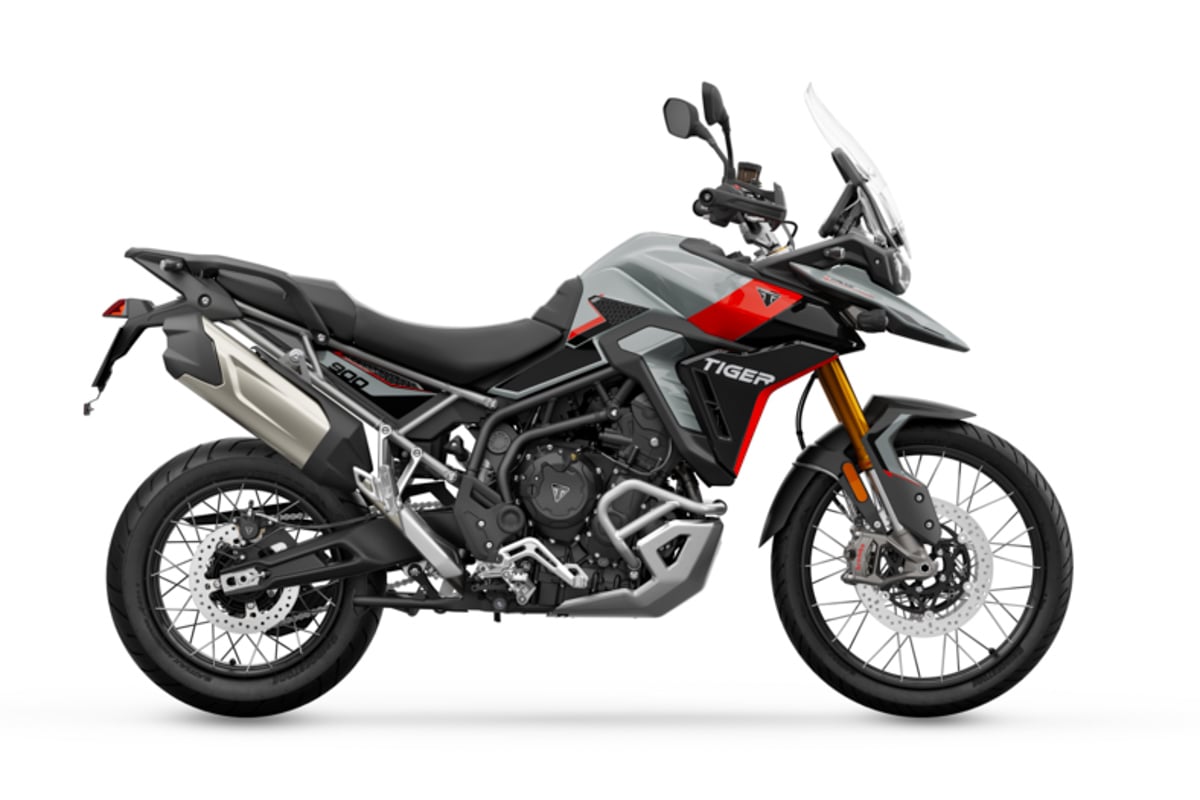
MSRP: $17,395
While the flagship Rally Pro shares the same core components as its road-going siblings (engine, frame, etc.), it also benefits from a smattering of serious off-road upgrades as the name suggests. Longer travel (and fully adjustable) Showa suspension is the main headline here, but you're also getting a set of tubeless spoked wheels with a proper 21" hoop up front.
The Rally Pro also comes with an additional riding mode called "off-road pro" which allows riders to fully disable ABS to both front and rear wheels. This is an important distinction because while both the GT and GT Pro models include an "off-road" setting, the front ABS can't be fully switched off for either bike.
The Rally Pro also gets all the same touring-focused upgrades as the GT Pro including heated seats, a TPMS system, and a quickshifter, although it notably lacks the electronically adjustable rear shock.
The standard "Rally" version is no longer being offered by Triumph, so if you want long travel suspension, you'll have to shell out for the Pro model.
2024 Triumph Tiger 900: Model Overview
Powertrain, Frame, Chassis
The biggest news with the new Tiger 900 is the engine, so we'll start there. As you've likely heard the folks at Triumph touting, the Tiger's revised 888cc incline triple now makes about 13% more power than the previous iteration, bumping the "middleweight" three-cylinder up into the triple digits at just over 106 horsepower.
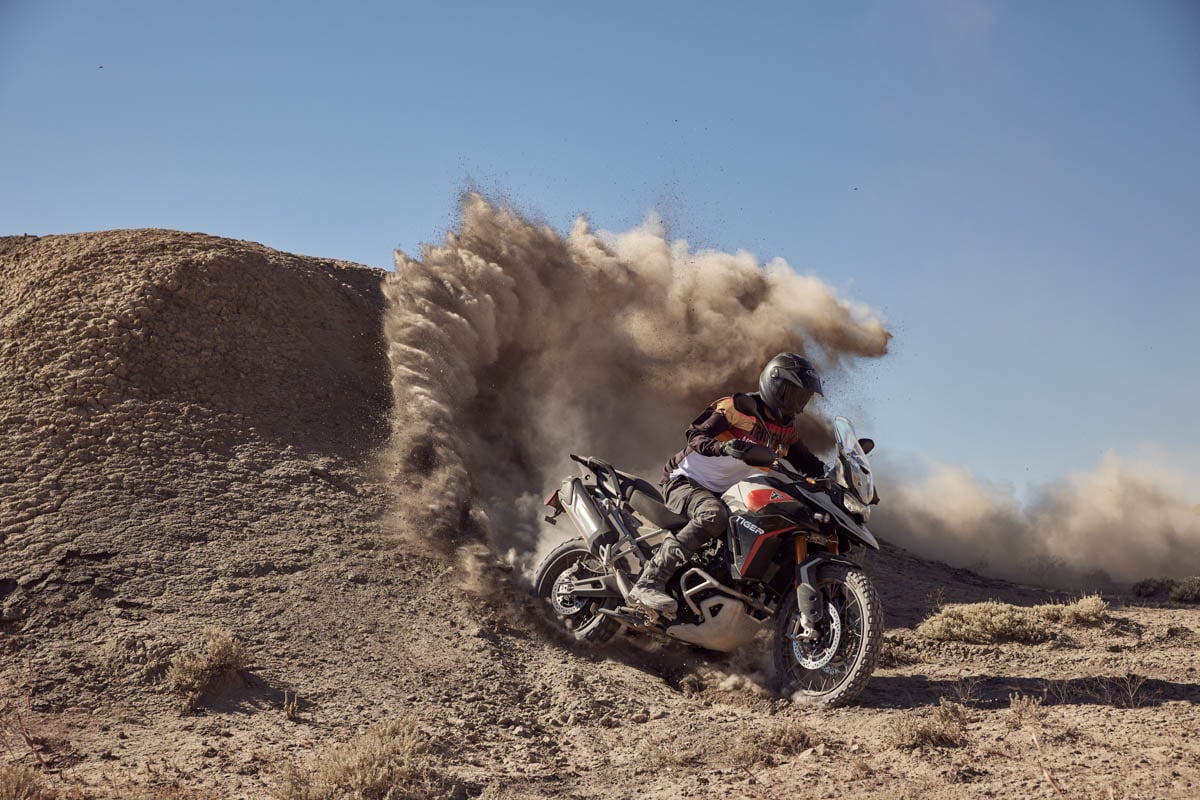 Of course the main driving force behind this change is the public perception that last year's Tiger was "a little down on power" compared to the latest and greatest middleweights from KTM, Ducati, and BMW. Triumph is still considered a "premium" brand, so of course they need to chase those same 100+ horsepower numbers to stay in the public eye.
Of course the main driving force behind this change is the public perception that last year's Tiger was "a little down on power" compared to the latest and greatest middleweights from KTM, Ducati, and BMW. Triumph is still considered a "premium" brand, so of course they need to chase those same 100+ horsepower numbers to stay in the public eye.
Does 13% extra power make a huge difference? We'd argue no, considering the last Tiger was already an absolute riot to ride, but we'll also note that the new engine makes a bit more torque across the rev range as well, which translates to more fun and flexibility both on and off the pavement.
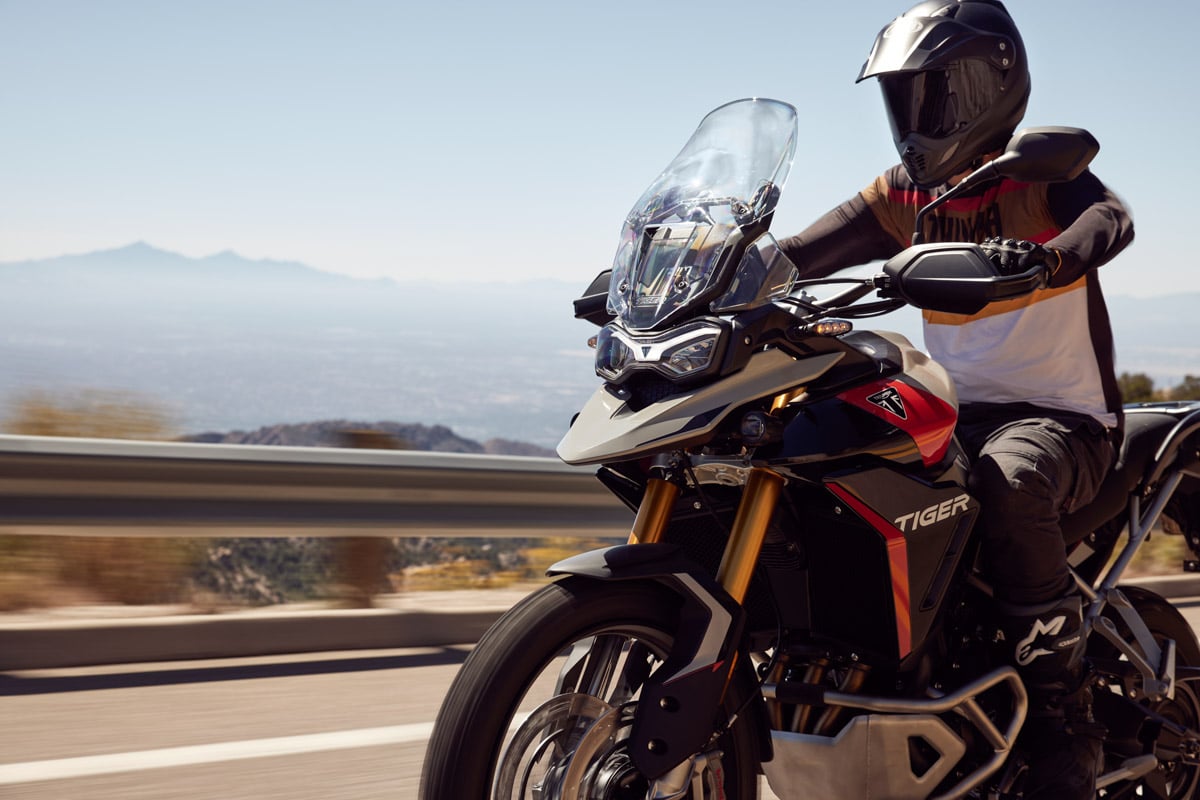 As for the frame and chassis, nothing much has changed, which is to be expected considering that the current Tiger platform is only a few years old. Despite that fact the ride does feel a good bit different from the saddle, due largely to a revised (lower/flatter) seat shape and new rubber-damped handlebars that cut down on the triple's inherent vibrations.
As for the frame and chassis, nothing much has changed, which is to be expected considering that the current Tiger platform is only a few years old. Despite that fact the ride does feel a good bit different from the saddle, due largely to a revised (lower/flatter) seat shape and new rubber-damped handlebars that cut down on the triple's inherent vibrations.
Suspension
Triumph is offering competitive suspension packages on each of the three new Tiger 900 models, and we've found each is well suited to its stated intentions.
While the GT and GT Pro's Marzocchi-branded suspension may lack the bling factor of Swedish gold, the Italian manufacturer is widely considered among the best in the business, and remains the weapon of choice for brands like BMW and Ducati on all but their most exclusive offerings.
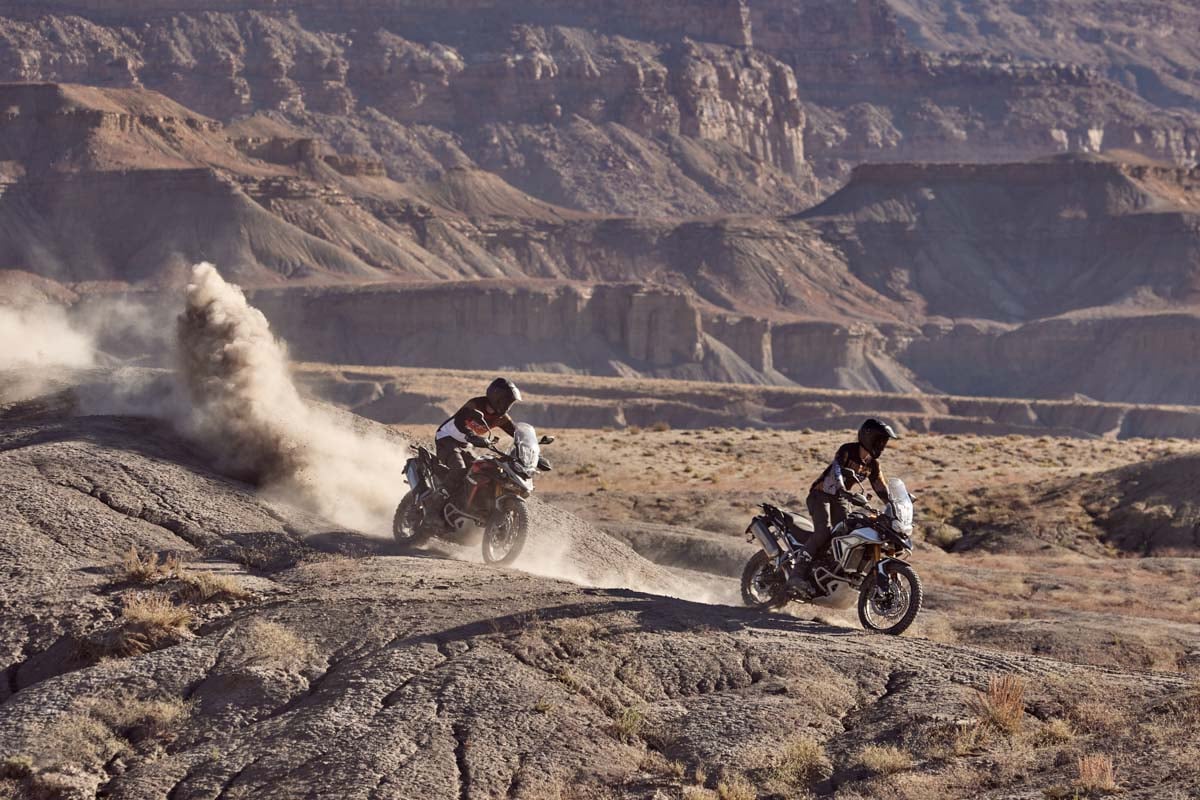
With nearly 7" of well-damped travel on tap, both bikes deliver a plush and stable ride on the pavement while still having enough squish to handle the lighter side of off-roading.
The GT Pro's addition of electronic adjustability for the rear shock means road warriors can quickly dial in their machine for anything from fast and light canyon missions to cross-country two-up epics on the fly, which is a feature we've thoroughly enjoyed on touring bikes in the past.
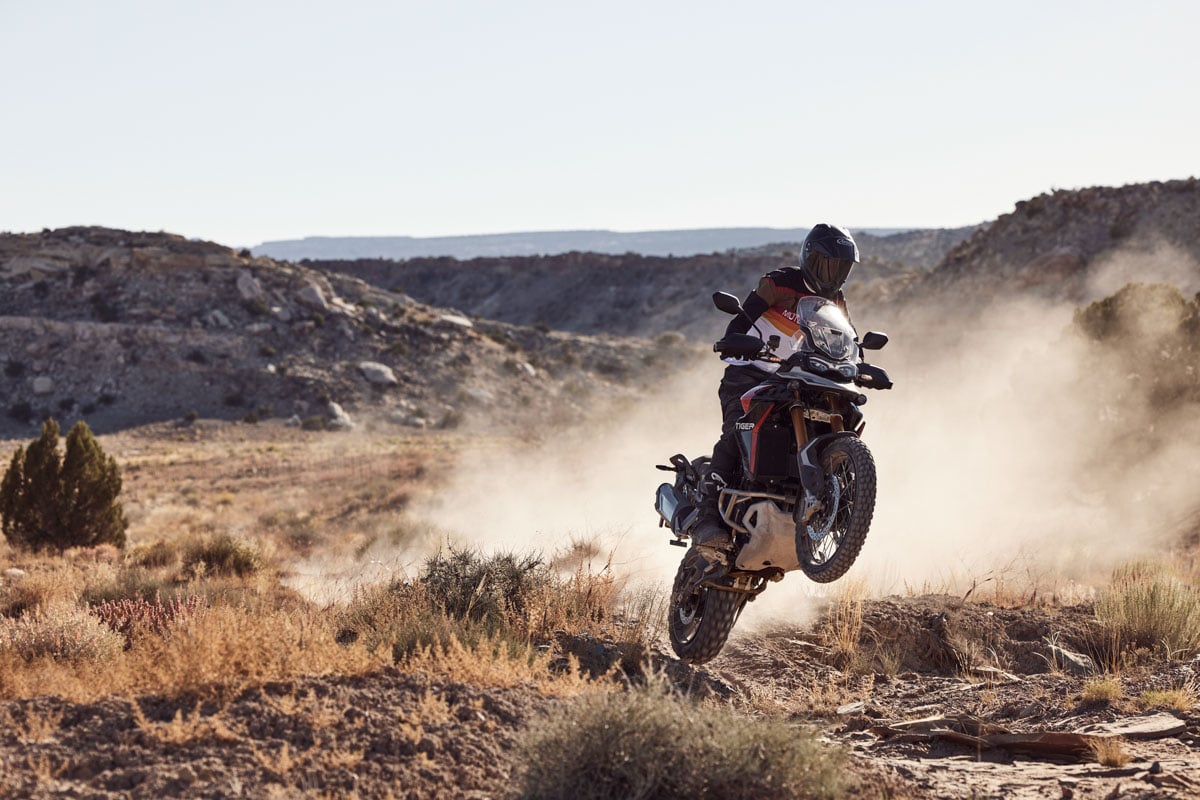 As for the Rally Pro model, KYB suspension has long been synonymous with off-road performance, and the Triumph Tiger 900's 9"+ of travel makes this bike just as capable under aggressive riders as the premium bikes it competes with.
As for the Rally Pro model, KYB suspension has long been synonymous with off-road performance, and the Triumph Tiger 900's 9"+ of travel makes this bike just as capable under aggressive riders as the premium bikes it competes with.
The only shortcoming we've noticed is that the Rally Pro's rear shock lacks compression damping adjustment, which is present on both the Ducati Desert X and KTM 890 Adventure R.
Tech and Electronics
The new Triumph Tiger 900 benefits from all the "new standard" features we've come to expect on a premium motorcycle, adventure bike or otherwise. That includes cornering-sensitive ABS, a 6-axis IMU, selectable ride modes for all your standard situations, and a big 'ol full-color TFT dash.
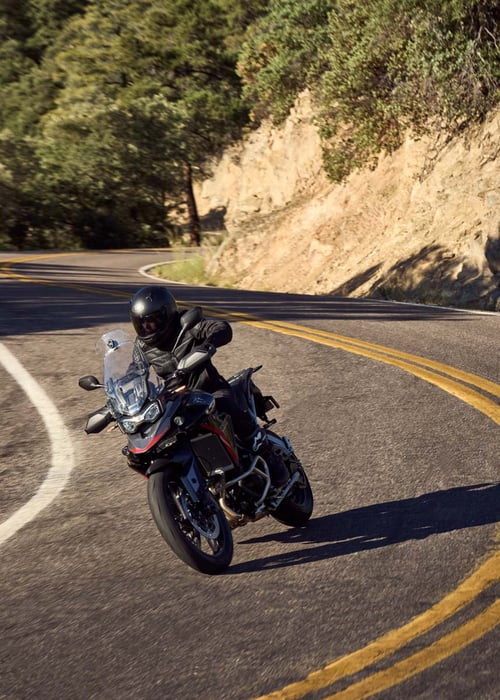
We'll also give Triumph props for including heated grips as standard equipment across the range, rather than making it an optional accessory or limiting it to the up-spec versions of the bike.
As noted above, the GT Pro benefits from the most impressive tech package overall, adding heated rider and passenger seats, electronic rear suspension, and slick back-lit controls to the list of standard equipment.
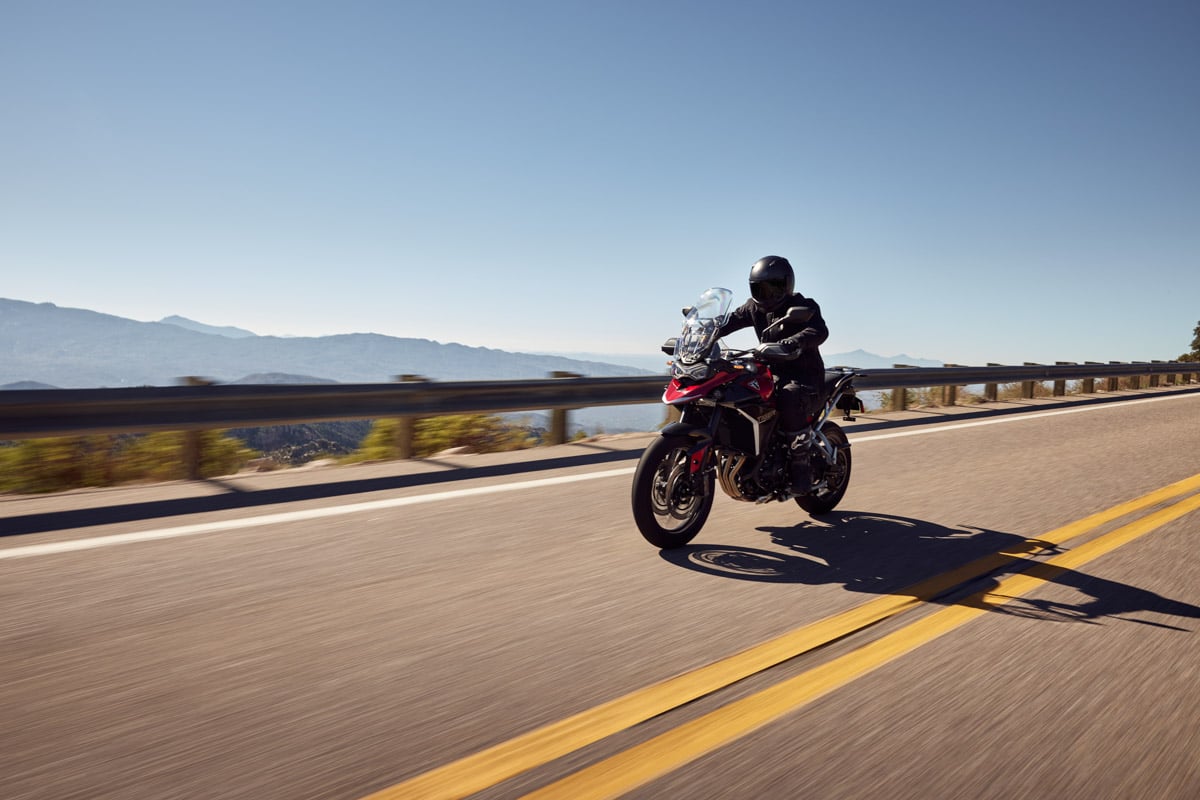 The other notable piece of tech worth mentioning here is ABS. These are part-time off-roaders, after all, so the ability to switch off ABS is a priority for many riders, ourselves included. Each of the GT models includes the ability to switch rear wheel ABS off, but up front both bikes are limited to a "dirt optimized" ABS setting when in off-road mode.
The other notable piece of tech worth mentioning here is ABS. These are part-time off-roaders, after all, so the ability to switch off ABS is a priority for many riders, ourselves included. Each of the GT models includes the ability to switch rear wheel ABS off, but up front both bikes are limited to a "dirt optimized" ABS setting when in off-road mode.
Only the Rally Pro package includes the option to switch front and rear ABS off entirely, a feature available through the bike's exclusive "Off-Road Pro" riding mode.
This won't be an issue for the overwhelming majority of prospective buyers, but considering Yamaha worked it into their budget-focused Tenere 700, it seems like an oversight on a bike starting at $15,000 in its most basic configuration.
2024 Triumph Tiger 900 Rally Pro Specs
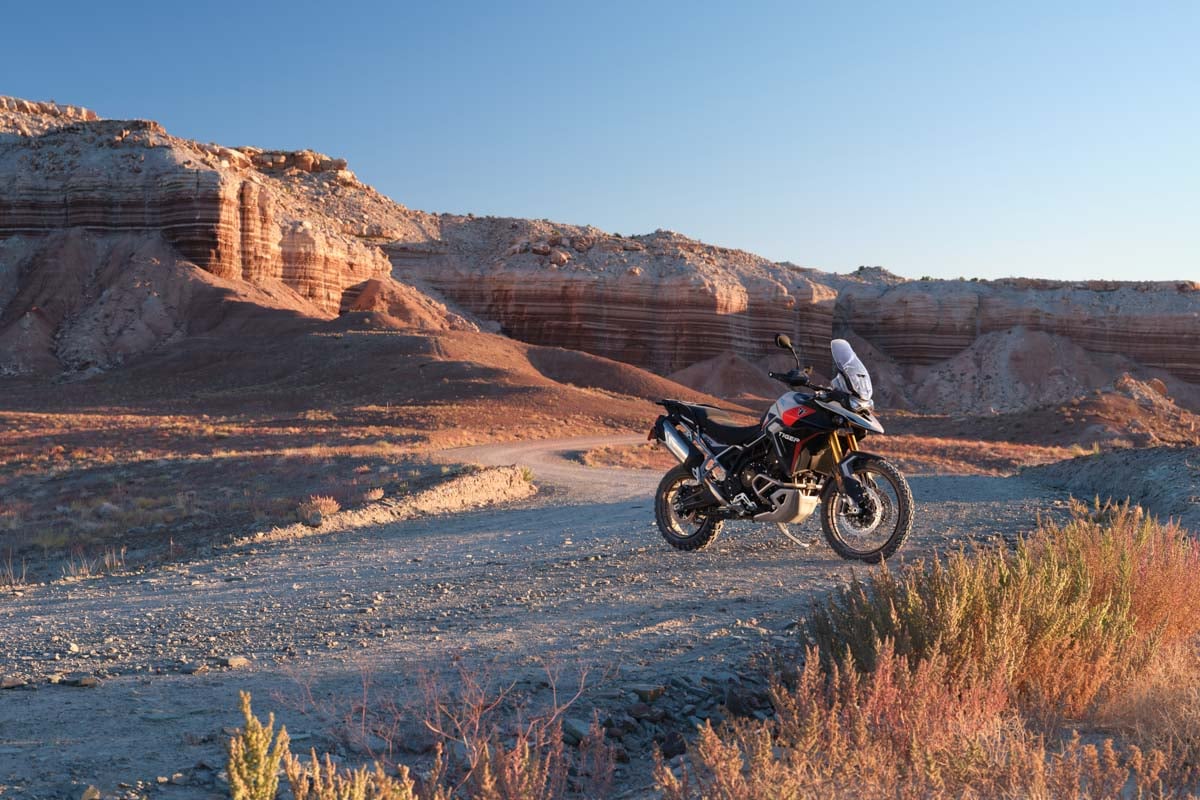
MSRP: $17,595
Engine
- Engine: Liquid-cooled, 12-valve DOHC inline-three
- Displacement: 888cc
- Bore x stroke: 78mm x 61.9mm
- Compression: 13.0:1
- Transmission: 6-speed manual
- Final drive: Chain
- Horsepower: 106.5hp @ 9,500rpm
- Torque: 66.4 lb-ft @ 6,800 rpm
Chassis, Suspension, and Brakes
- Frame: Tubular steel trellis, bolt-on aluminum subframe
- Front suspension: Showa 45mm USD forks, fully adjustable
- Front travel: 240mm
- Rear suspension: Showa monoshock, adjustable preload and rebound
- Rear travel: 230mm
- Front brakes: Dual 320mm disk, Brembo 4 piston Monobloc
- Rear brakes: Single 255mm disk, single piston caliper
- ABS: Yes, cornering optimized
- Wheels: Spoked/tubeless, 17" x 21"
- Tires: Bridgestone Battlax Adventure, 90/90/21 front, 150/70/17 rear
Dimensions/Capacities
- Rake: 24.4 degrees
- Trail: 4.59"
- Wheelbase: 61"
- Seat height: 33.9"
- Fuel capacity: 5.28 gal
- Weight: 503 lbs (wet)
Finally our Triumph Tiger 900 Review with Pros & Cons
Pros
- More power, more torque, same great triple
- Attractive list of standard features across models
- Improved off-road prowess on Rally Pro model
- Improved service intervals
It's no secret that the middleweight adventure segment remains one of the most competitive on the planet, and we believe Triumph did everything they needed to this year to keep the Tiger 900 relevant as a premium offering.
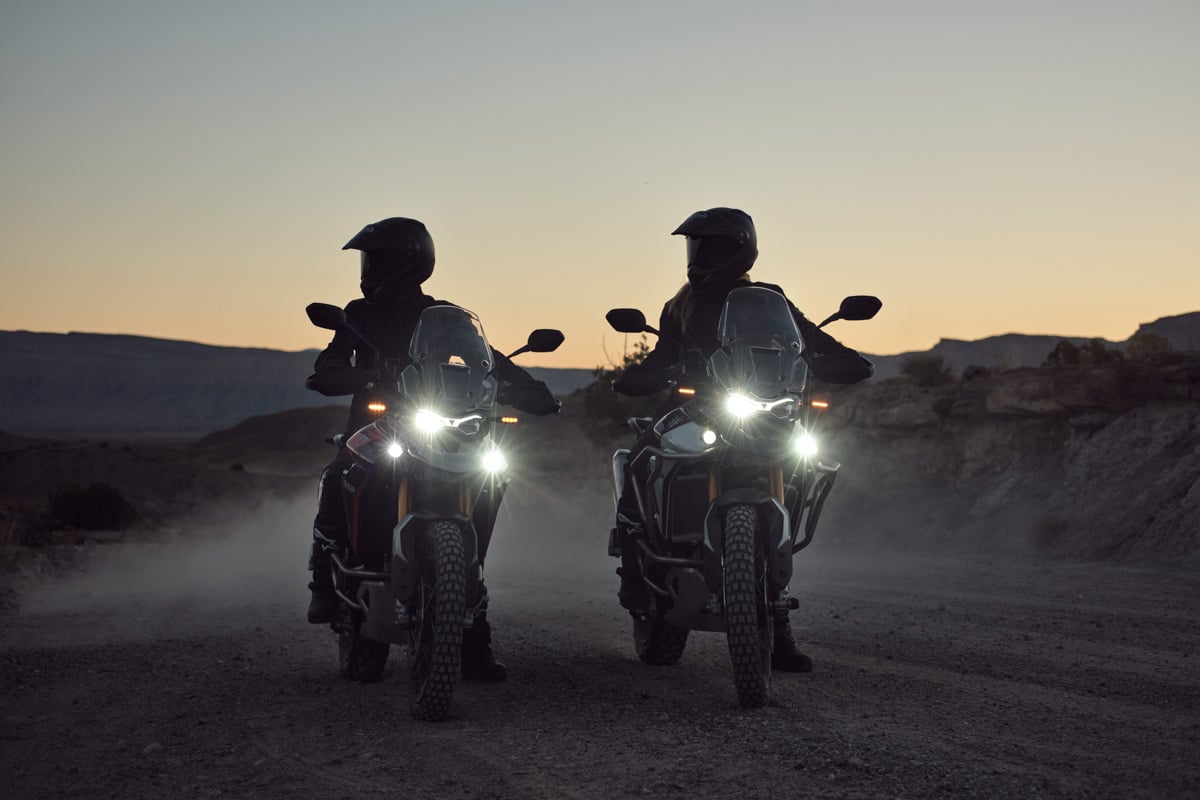
While we'd never accuse the outgoing bike as being "down on power" in any sense of the word, the new bike joins its upmarket stablemates from Ducati and KTM in the 100+ club, and more power is never a bad thing. Better to have it and not need it, as they say, especially if you're selling a premium product.
Previous iterations of the Tiger 900 are considered by many to be the best option for road-oriented adventure riding due to their fun and versatile three-cylinder engine, and this year's refinements to power delivery and standard equipment should defend that title.
In the dirt the Rally Pro ups the ante for performance with a 21" front and truly switchable ABS front and rear, bringing the Tiger up to par with its competition, at least on paper.
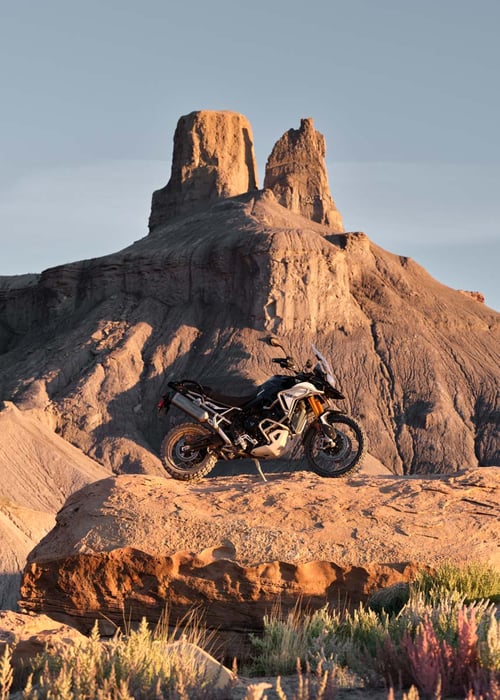 We'll also note that in addition to the boost in power, Triumph's refinements to the engine also pushed the Tiger's major service interval out to 18,000 miles, which helps keep this bike competitive from a maintenance/reliability standpoint.
We'll also note that in addition to the boost in power, Triumph's refinements to the engine also pushed the Tiger's major service interval out to 18,000 miles, which helps keep this bike competitive from a maintenance/reliability standpoint.
As far as we're concerned the old paradigm of "more performance means more maintenance" simply can't survive in a market this competitive, so it's nice to see Triumph get with the program.
Cons
- 17" rear wheel seems like a missed opportunity
- Factory Rally tires are still street tires
- Rally Pro is 20lbs heavier than GT somehow
- No standard (less expensive) Rally model
While the new Triumph Tiger 900 brings a lot to the table, we do have a few complaints to register with the UK's latest middleweight. Interestingly enough all of them are with the Rally Pro model.
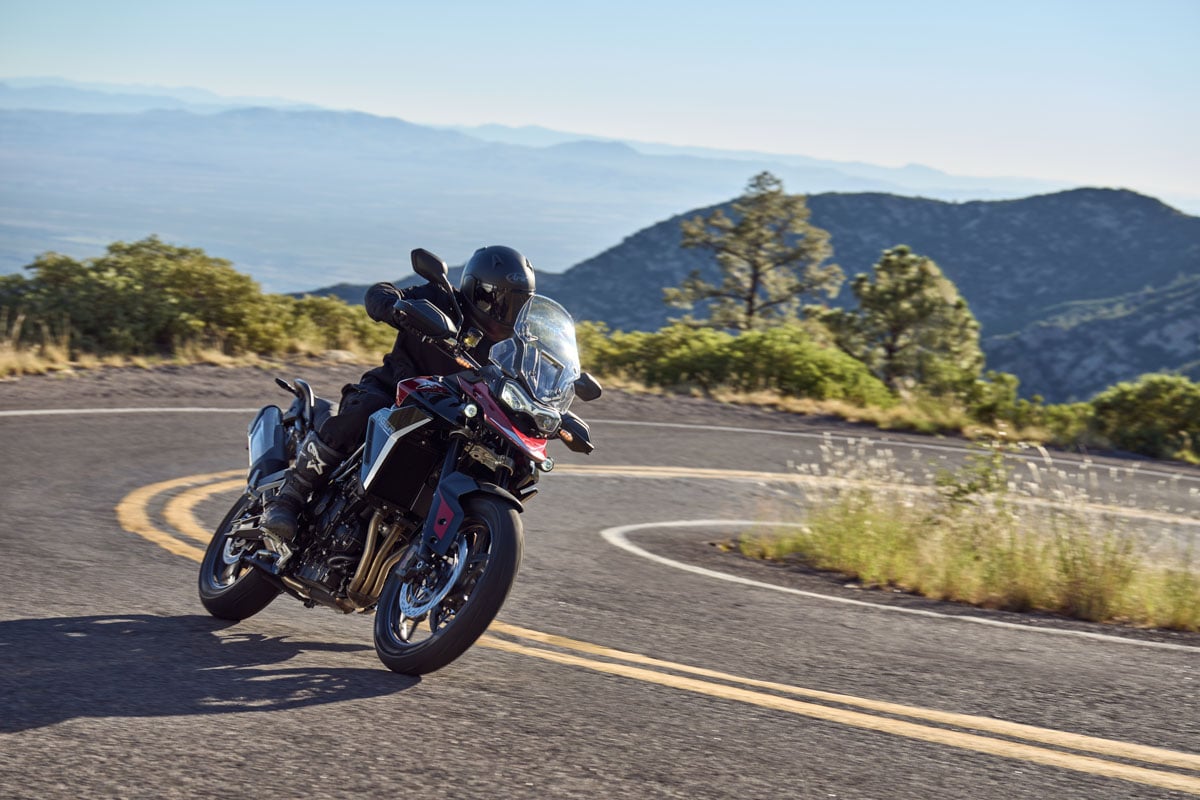
That's because while the road-biased GT and GT Pro bikes still make a strong argument for the best in their class, we believe the Rally Pro will still struggle to pull sales from other off-road-focused middleweights. The 17" rear wheel, for example, seems like an obvious oversight on an "aggressive off-road" machine.
The same could be said for the Rally's extremely road-biased Bridgestone Battlax Adventure rubber, and while tires are typically the first upgrade we make on an adventure bike, a 90/10 tire like this feels like a serious marketing faux pas at minimum.
We expect to see a more "committed" build sheet on a premium "off-road" type model (KTM, Ducati, Aprilia), so if you're gonna throw spokes on a bike, make sure the tires match the attitude.
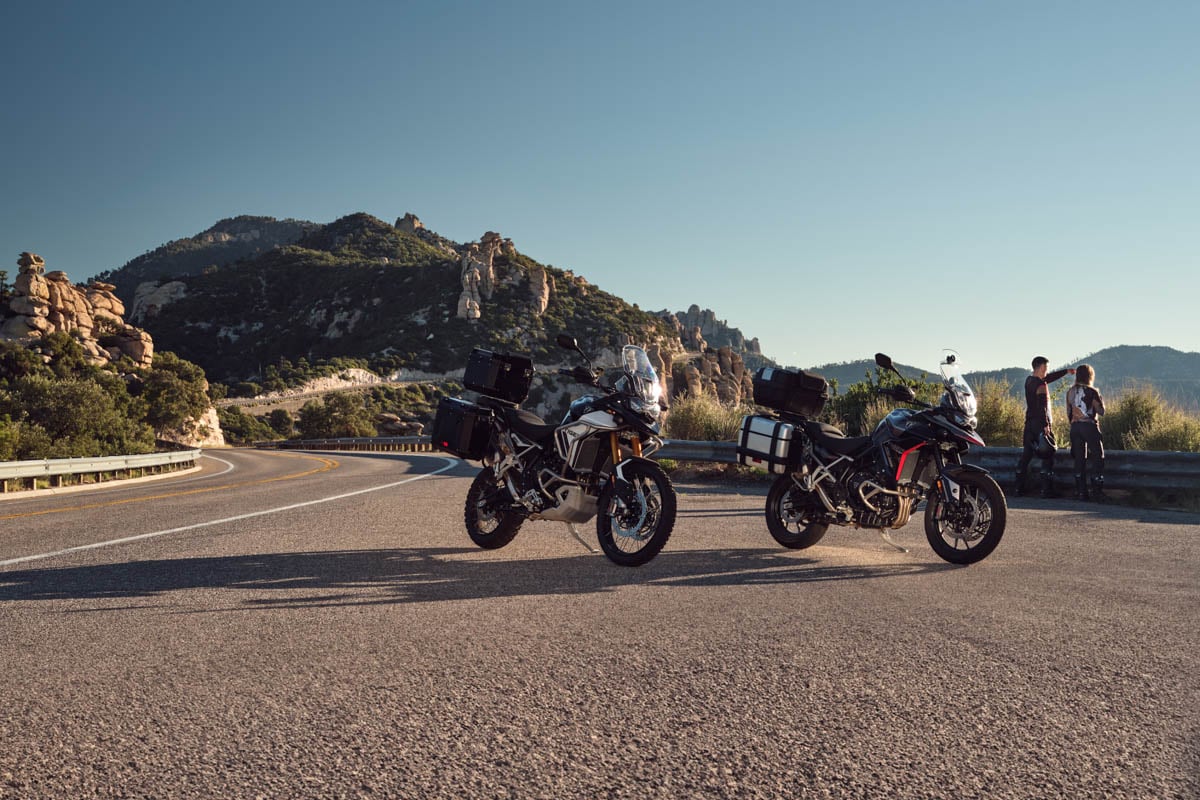 Lastly, we'd also like to point out that for whatever reason, the Rally Pro weighs a full 20 pounds more than the base GT, bringing the total wet weight up above the 500-pound mark. That means the Rally also outweighs the Desert X by 10 pounds, and the 890 R by a whopping 30+ lbs.
Lastly, we'd also like to point out that for whatever reason, the Rally Pro weighs a full 20 pounds more than the base GT, bringing the total wet weight up above the 500-pound mark. That means the Rally also outweighs the Desert X by 10 pounds, and the 890 R by a whopping 30+ lbs.
We're not sure where this added weight came from considering the nearly-identical 2020 Rally Pro weighed under 480lbs wet, but emissions equipment is a likely culprit.
Final Thoughts On the Triumph Tiger 900
While it's easy to get lost in the sauce groaning over spec sheets and minor missteps, we're well aware that this, too, is a good thing.
Middleweight ADVs have gotten so damn good that we're able to point to things like wheels and tires as major offenders, wagging a finger at bikes like the Tiger 900 that are likely more capable on road and off than 99% of riders will ever need.
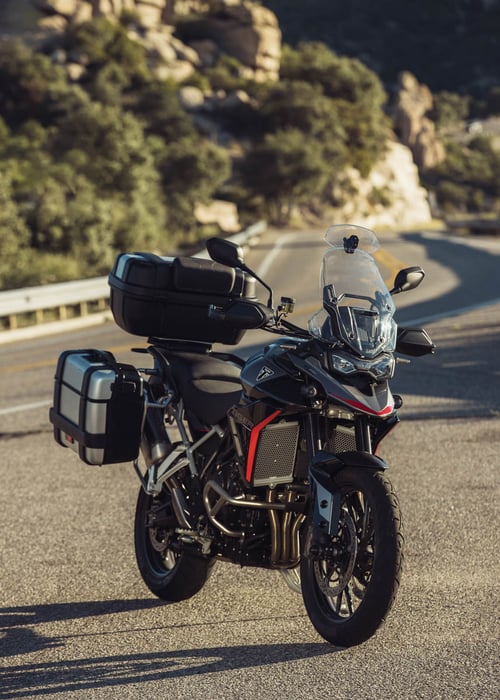 The bottom line for us is how a bike makes you feel, and if you've ever ridden one of Triumph's trademark triples, you'll know these motors deliver a uniquely addictive brand of excitement found nowhere else.
The bottom line for us is how a bike makes you feel, and if you've ever ridden one of Triumph's trademark triples, you'll know these motors deliver a uniquely addictive brand of excitement found nowhere else.
In short, this bike was already damn good and Triumph just made it even better, and choosing between the Tiger 900 and one of its competitors simply comes down to personal preference.
Our first impression is that you'd be hard-pressed to find a middleweight with better manners or performance on a twisty ribbon of pavement, and the triple's well-known signature of satisfying bottom-end grunt and spirited top-end punch are hallowed for good reason.
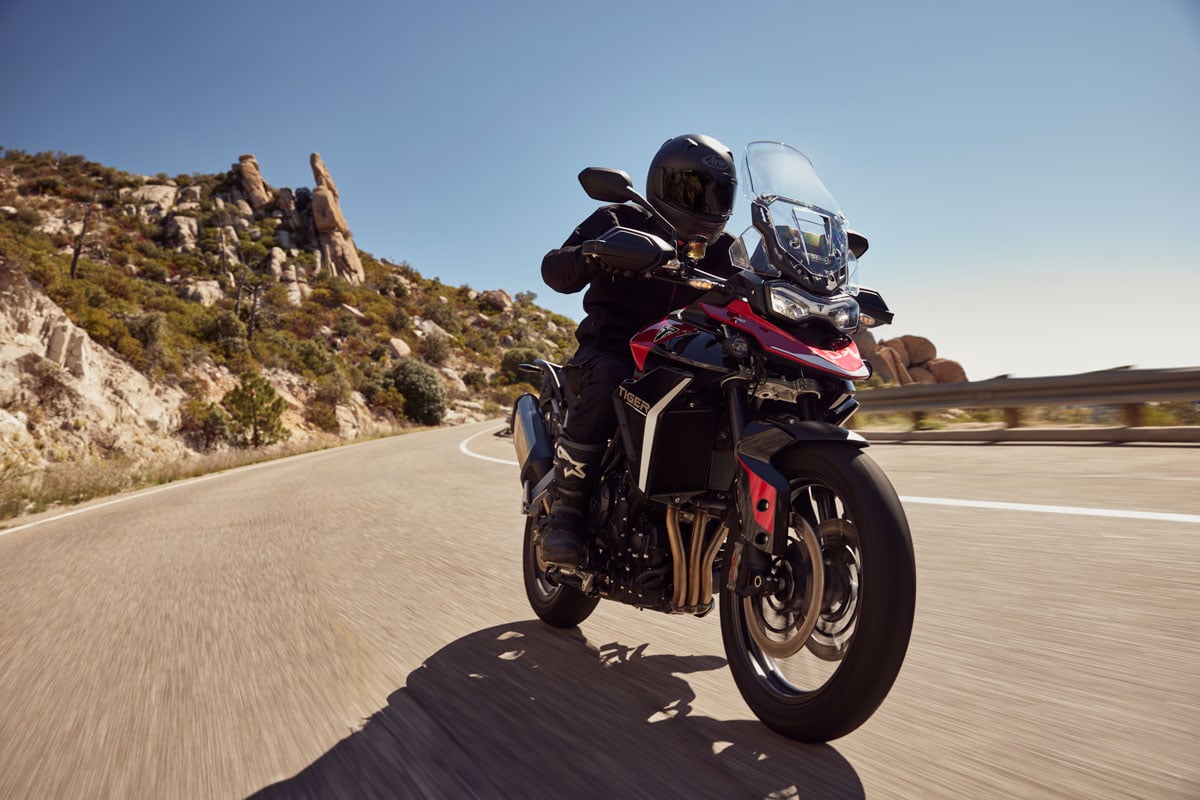 For our money we'd bet on the GT Pro as the road-going adventure machine to buy, but will likely stick with a two-cylinder alternative if we we're buying a premium ADV for heavy lifting offroad.
For our money we'd bet on the GT Pro as the road-going adventure machine to buy, but will likely stick with a two-cylinder alternative if we we're buying a premium ADV for heavy lifting offroad.
→READ MORE: 2024 Yamaha Tenere 700 Review: The Good and the Bad and The Best Adventure Bikes for Beginners.









